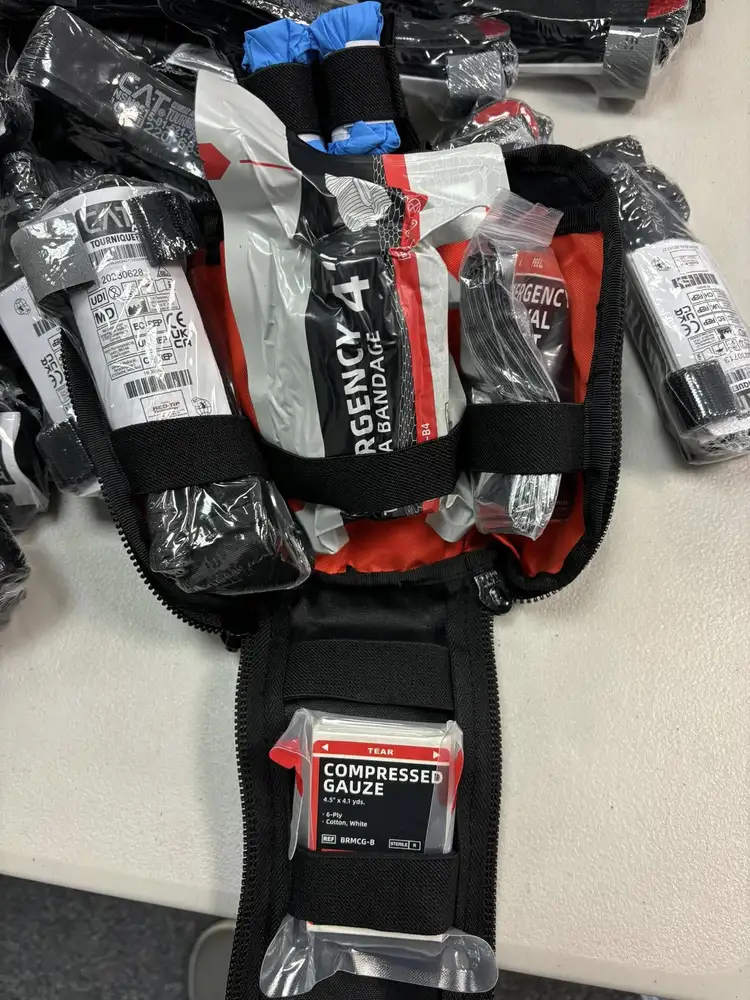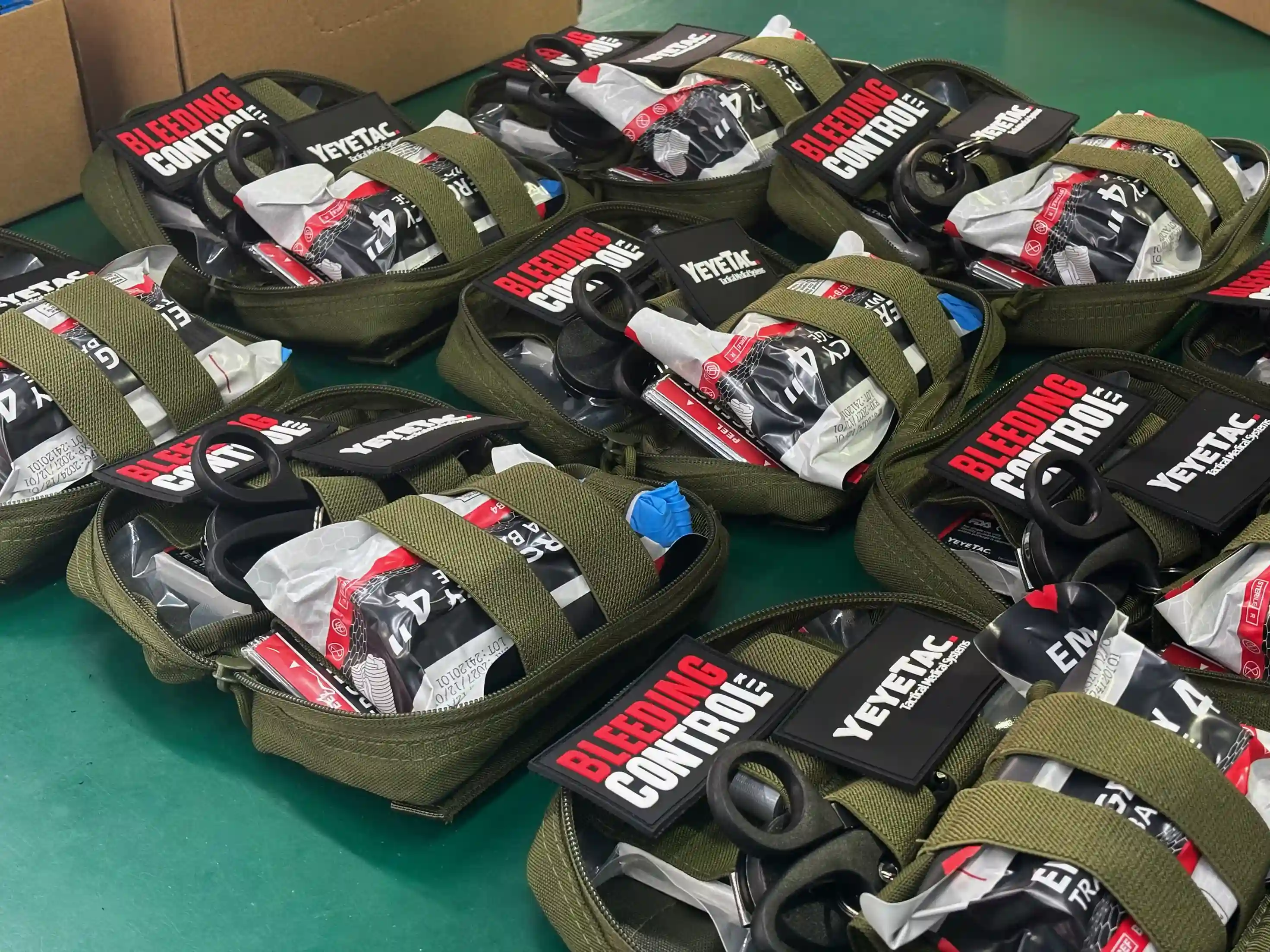Dropshipping vs Wholesale: Best Model for First Aid Kit Business
- YEYETAC™
- 5 hours ago
- 5 min read

In the expanding e-commerce landscape, first aid kit businesses face a critical decision between two distribution models: dropshipping and wholesale. This choice significantly impacts operations, profitability, and growth potential. Understanding the differences between each model within the medical supply context can determine your business success.
What is dropshipping, and how does it transform first aid kit business operations?
Dropshipping represents a modern approach to selling first aid kits without inventory management responsibilities.
Basic dropshipping mechanism
In the dropshipping model, your first aid kit business operates as a frontend storefront. When a customer places an order, you purchase the product from a supplier who ships directly to your customer. This approach eliminates inventory handling while allowing you to focus exclusively on marketing and sales efforts.
First aid kit businesses suited to dropshipping
Dropshipping works particularly well for startups with limited capital, businesses testing new market segments, and entrepreneurs who excel at digital marketing. E-commerce stores targeting direct-to-consumer sales with varied product lines can benefit from this low barrier entry model.
Impact on first aid kit quality control
One significant consideration is quality control limitations. When dropshipping, you rely entirely on your supplier's quality standards and packaging protocols. For medical supplies like first aid kits, this dependency requires choosing suppliers with demonstrated reliability and consistent product quality to protect your brand reputation.
Challenges in international dropshipping for medical supplies
Shipping medical supplies internationally presents unique challenges. Different countries have varying regulations for importing medical items, customs procedures can delay time sensitive products, and international shipping costs may reduce profit margins. Additionally, longer shipping times might negatively impact customer satisfaction.
Strategies for testing different first aid product lines
Dropshipping provides an exceptional platform for market testing various first aid kit configurations without inventory investment. Businesses can quickly introduce specialty kits (outdoor, travel, sports) to identify high-performing products before committing to inventory purchases.
What are the traditional advantages of wholesale in first aid supply distribution?
Wholesale represents the conventional approach to product distribution with established benefits for medical supply businesses.
Core wholesale operation process
In the wholesale model, you purchase first aid kits and supplies in bulk at discounted rates, maintain inventory, and fulfill orders from your stock. This end-to-end control gives you complete oversight of products from acquisition through customer delivery.
Customization possibilities under wholesale
Wholesale offers superior customization capabilities that are particularly valuable in the first aid market. You can create proprietary kit configurations, incorporate branded packaging, or develop specialty kits for specific industries and options typically unavailable through dropshipping arrangements.
Impact on profit margins for first aid supplies
While requiring higher initial investment, wholesale typically delivers better unit economics. Bulk purchasing significantly reduces per unit costs, potentially doubling margin percentages compared to dropshipping. This margin advantage becomes particularly significant when selling premium or specialized first aid kits.
Special inventory management considerations
First aid supplies demand specialized inventory management due to expiration dates on many components. Wholesale operations must implement first-in-first-out systems, conduct regular expiration date audits, and develop strategies for rotating stock to minimize waste and considerations uniquely important in medical product distribution.
Competitive advantages for institutional purchases and government projects
Wholesale operations hold distinct advantages when serving institutional buyers like schools, corporations, or government agencies. These clients typically prefer bulk purchasing, request samples before ordering, and may require customized kit specifications and requirements better fulfilled through a wholesale operation with inventory control.
What competitive advantages can dropshipping bring to first aid kit businesses?
Dropshipping offers several strategic benefits for first aid kit businesses:
Minimal startup investment: The drop shipping model requires significantly less startup capital to enter the market compared to wholesale operations
Product line flexibility: Test various kit types without inventory commitment
No expiration concerns: Avoid losses from expired medical supplies
Marketing focus: Concentrate resources on brand building rather than logistics
Lower operational overhead: Eliminate warehousing and inventory management costs
This model particularly benefits new entrepreneurs testing the market or businesses with strong digital marketing capabilities but limited capital.
What unique challenges does the wholesale model face in the first aid supply industry?
Wholesale first aid kit operations face specific industry challenges:
Import and customs complexities: Navigate special documentation and inspections for medical products
Regulatory compliance burden: Manage MDR CE certification and other market-specific requirements
Expiration date management: Implement systems to track and rotate dated medical components
Substantial capital requirements: Before generating revenue, a relatively large amount of capital must be invested in inventory
Specialized logistics needs: Develop systems for temperature control, sterility maintenance, and lot tracking
These challenges create significant barriers to entry but can be overcome through proper planning and industry expertise.

How to choose the most suitable distribution model for your first aid kit business?
When deciding between dropshipping and wholesale for your first aid kit business, consider these critical factors:
Understanding customer needs and financial capacity
Your customer base largely determines which model works best. Dropshipping suits businesses targeting individual online consumers seeking standard kits, while wholesale becomes essential when serving institutional buyers like schools, government agencies, or organizations needing bulk purchases with customization options.
Evaluate your starting capital realistically. Dropshipping requires minimal upfront investment, making it ideal for testing market response. As your business grows and order volumes increase, wholesale becomes more cost-effective through economies of scale, though it demands substantial initial capital.
Product strategy and supply chain considerations
Consider your product specialization and supplier relationships carefully. Standard first aid kits work in either model, but custom configurations require wholesale operations. For dropshipping, you depend entirely on your supplier's design and quality control, which works only with manufacturers offering competitive designs and reliable quality.
With wholesale, you'll need import qualifications and the ability to navigate medical product customs clearance, plus MDR CE registration for European markets. However, bulk wholesale orders, especially via sea or rail, offer significantly lower per-unit costs than dropshipping prices, translating to higher potential profits despite increased storage expenses.
Evolving your business model
Many successful businesses implement a strategic hybrid approach, starting with dropshipping to establish market presence while gradually introducing wholesale operations for bestselling products. This phased approach minimizes risk while allowing controlled growth.
Companies like YEYETAC™ support both distribution models, offering flexibility as your business evolves from startup to established enterprise. The right choice ultimately depends on your specific circumstances, growth objectives, and customer requirements.

Conclusion
Both wholesale and dropshipping models offer distinct advantages for first aid kit businesses at different growth stages. Assess your specific business needs, customer base, and financial capacity to determine the right approach. Contact us at support@tacticalmedicalkit.com to discuss your first aid kit distribution needs and discover how we can support your business model with our flexible solutions.
FAQs
What basic requirements must a first aid kit business meet for dropshipping?
A successful dropshipping operation needs reliable suppliers with consistent product quality, efficient order processing systems, and strong digital marketing capabilities to drive traffic and conversions.
How do wholesale businesses address product certification issues?
Wholesale businesses must verify that all products meet target market certifications (such as MDR CE for Europe), complete registration requirements as distributors, and maintain documentation proving compliance throughout the supply chain.
How can small first aid kit businesses balance between both models?
Many small businesses adopt hybrid approaches, starting with dropshipping to test markets while gradually introducing wholesale for best-selling products, using revenue from dropshipping to fund inventory investment.
What factors determine if a supplier is suitable for dropshipping partnership?
Evaluate potential suppliers on inventory capacity, shipping speed, quality consistency, blind shipping capabilities, return policy flexibility, and their track record with other dropshipping partners.
How should wholesale operations manage first aid product expiration dates?
Implement first-in-first-out inventory systems, conduct regular expiration audits, develop special pricing strategies for approaching expiration inventory, and negotiate supplier agreements addressing product rotation.



